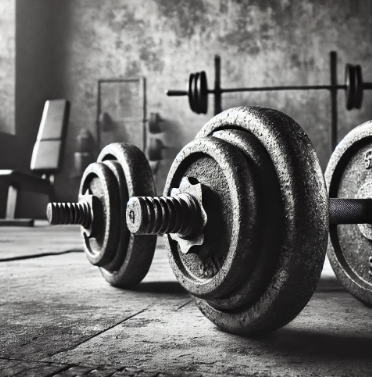Why Rear Delt Training is Important
Published By GainzTracker, 29th September 2024

Introduction to Rear Delt Training
When it comes to shoulder development, many people focus on the front and lateral delts, often neglecting the rear deltoids. However, the rear delts play a crucial role in overall shoulder health, strength, and aesthetics. Training your rear delts not only enhances the appearance of your shoulders but also supports better posture and performance in various exercises. In this article, we’ll explore why rear delt training should be a key part of your routine.
The Role of Rear Delts
The rear deltoid, or posterior deltoid, is located at the back of your shoulder and is responsible for shoulder extension, external rotation, and horizontal abduction. This muscle is heavily involved in pulling movements, making it essential for exercises like rows, pull-ups, and deadlifts. Strong rear delts also help stabilize your shoulders during pressing movements, contributing to improved overall performance.
Benefits of Rear Delt Training
- Improved Shoulder Balance: Many lifters focus on the front and lateral delts, leading to muscle imbalances. By training the rear delts, you create a more balanced and symmetrical shoulder appearance, reducing the risk of injury caused by overdeveloping one part of the shoulder.
- Better Posture: Weak rear delts can contribute to rounded shoulders, especially in people who sit for long periods or perform a lot of pressing exercises. Strengthening the rear delts helps pull your shoulders back, improving your posture and reducing tension in your upper back.
- Increased Strength in Pulling Movements: Since the rear delts are involved in pulling exercises, strengthening them directly impacts your performance in moves like rows, deadlifts, and pull-ups. A strong rear delt enhances your pulling strength and power.
- Enhanced Shoulder Stability: The rear delts play a stabilizing role during pressing movements, such as bench presses and shoulder presses. Well-developed rear delts help keep the shoulder joint stable, reducing the likelihood of injury when performing heavy lifts.
Key Exercises for Rear Delt Development
1. Rear Delt Flyes
Rear delt flyes are one of the best isolation exercises for targeting the posterior delts. They can be performed with dumbbells, cables, or even resistance bands.
- Start by bending forward at the hips with a flat back, holding dumbbells in each hand.
- Raise your arms out to the sides in a wide arc, focusing on squeezing your shoulder blades together.
- Lower the weights back down slowly and repeat for 3-4 sets of 10-15 reps.
2. Face Pulls
Face pulls are a great compound exercise that targets the rear delts while also engaging the upper back and traps.
- Attach a rope to a cable machine at face height.
- Grip the rope with both hands and pull it toward your face, keeping your elbows high and focusing on squeezing your rear delts.
- Return to the starting position with control and repeat for 3-4 sets of 12-15 reps.
3. Bent-Over Rows
Although primarily a back exercise, bent-over rows also work the rear delts, especially if you focus on using a wider grip and pulling toward your upper chest.
- Bend forward at the hips with a flat back, gripping the barbell or dumbbells.
- Pull the weight toward your chest, keeping your elbows flared out to the sides.
- Lower the weight back down and repeat for 3-4 sets of 8-12 reps.
Common Mistakes in Rear Delt Training
- Neglecting Rear Delt Exercises: Many people skip rear delt exercises in favor of more popular movements like bench presses and lateral raises. This leads to muscular imbalances and limits overall shoulder development.
- Using Too Much Weight: Using excessive weight on rear delt exercises often results in poor form and the use of other muscles to compensate. Focus on lighter weight with strict form to fully engage the rear delts.
- Not Targeting the Rear Delts Directly: Relying on compound movements like rows is not enough to fully develop the rear delts. Incorporate isolation exercises like rear delt flyes and face pulls for optimal results.
Conclusion
Rear delt training is crucial for achieving balanced shoulders, improving posture, and enhancing overall performance. By incorporating exercises that target the rear deltoids into your routine, you can avoid muscle imbalances and reduce the risk of injury. Focus on proper form, moderate weights, and consistency, and you’ll see significant improvements in both your shoulder strength and aesthetics. Don’t let your rear delts be an afterthought—make them a priority in your training regimen for long-term results.
Disclaimer: The information provided in this article is for educational purposes only and is not intended as a substitute for professional medical advice, diagnosis, or treatment. Always consult with a healthcare provider before beginning any exercise program. Use caution when performing exercises to avoid injury.